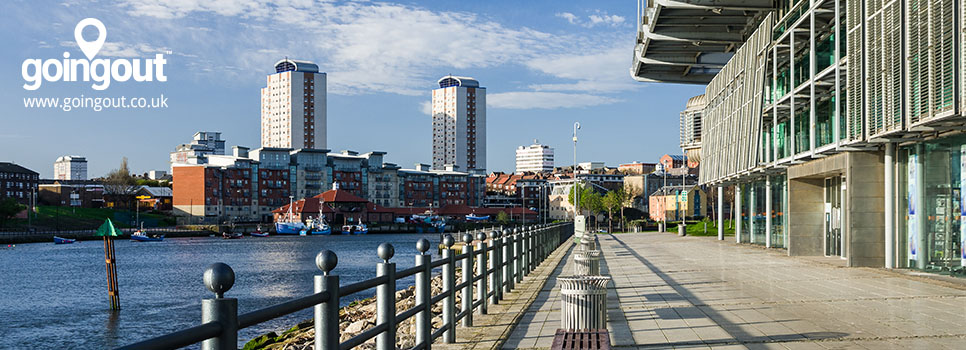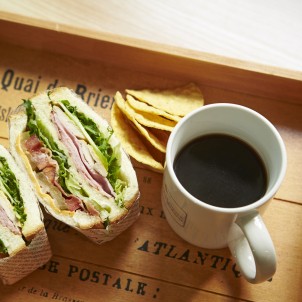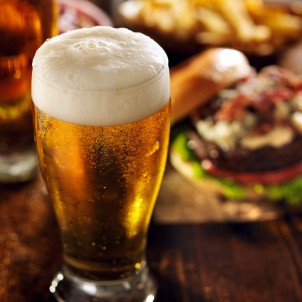Discover the best pubs & restaurants in Sunderland
![]() Town/City Name
Town/City Name
Sunderland
![]() County
County
Tyne and Wear
![]() Population
Population
174,807

 About Sunderland
About Sunderland
Sunderland is the main settlement of the City of Sunderland’s metropolitan borough. It is a port city found at the River Wear’s mouth. The latest population count was 174,807.
There were three original settlements in County Durham initially. There was Monkwearmouth in 674 and Bishopwearmouth in 930.
Aside from being tagged as the father of English history, Bede began his career in monastery in Monkwearmouth. There were some people saying that the name Sunderland came from the dedication to Bede.
People from Sunderland are often called Mackems. However, this term is not universally accepted.
There is no problem going out in Sunderland for there are numerous places one can visit and explore throughout the city. Some of the most frequented places in Sunderland are Sunderland Museum and Winter Gardens, National Glass Centre, Roker and Seaburn Beaches, Roker Park and Herrington Country Park.
Among these famous destinations, the Sunderland Museum and Winter Gardens can be considered the most favourite. A collection of Sunderland Lustreware ceramics which dates back to the 19th century can be found in the museum. There are also paintings and exhibits that are worth-seeing in this place.
When it comes to the food found in the city, there are a lot of restaurants in Sunderland that can offer guests with a diverse and thriving dining scene. Tourists can check out the vintage tearooms and fancy restaurants around the area.
There are also a broad array of pubs in Sunderland. Some of the most frequented ones are Brewers Fayre – The Wessington, The Windmill, Cheers Bar, Flanagans’s and Independent where local ales and fancy cocktails are served.
Aside from the food and drinks in the area, there are also numerous popular people hailing from Sunderland. Some of these famous people include artists Griselda Allan, Melanie Hill and Ernie Lotinga, and novelists Sehila Quigley, Mary Stewart and Mary Burchell.
 Places to eat in Sunderland, Restaurants in Sunderland
Places to eat in Sunderland, Restaurants in Sunderland
 Places to drink in Sunderland, Pubs and Bars in Sunderland
Places to drink in Sunderland, Pubs and Bars in Sunderland
 A brief history of Sunderland
A brief history of Sunderland
The earliest people to live in Sunderland were hunter-gatherers from the Stone Age. Microliths were recovered, along with other artifacts, from this area.
Many people believed that the area around the River Wear was inhabited by the Brigantes in the pre- ad post-Roman era. Roma artefacts were then discovered in the River Wear in 2021.
King Ecgfrith gave Benedict Biscop land, and he used this land to build the Wearmouth-Jarrow monastery. This place became a major centre of knowledge and learning in 686 when the Ceolfrid took over it. It had a library containing around 300 volumes.
Bede mostly worked on the Codex Amiatinus which was told to be the world’s finest book, according to White. This book was made at the monastery.
The Vikings raided the coast near the end of the 8th century, and the monastery was abandoned in the mid-9th century. Athelstan of England gave the lands on the river’s south side to the Bishop of Durham. These lands were later known as Bishopwearmouth.
There was a fishing village called Soender-land in 1100. This was included in the Bishopwearmouth parish and has later evolved into Sunderland. Sunderland was then given by Hugh Pudsey a charter, and another charter was given by the Bishop of Durham to the merchants. The first event happened in 1179, and after some time, Sunderland became a port.
Thomas Menville built ships at Wearmouth from 1346. Coal exportation then became slowly rampant by 1396. Salt trade contributed to the rapid growth of the port.
Coal and salt exportation continued to progress through the 17th century. The North was captured in 1644 by parliament. Because of that, the villages which were later known as Sunderland were taken, too.
The shipbuilding trade in Sunderland grew in the 18th century, and the town might have even become Britain’s premier shipbuilding centre.
A lighthouse designed by Engineer Jonathan Pickernell was built in Sunderland and another on the South Pier. Public transportation progressed in 1900-1919. There was an electric tram system which was replaced by buses in the 1940s.
Shipbuilding still grew in town, especially during the First World War, but it declined at the latter end of it through the Great Depression.
In the 1980s and 1990s, new industries developed to replace the heavy industries, and there was also an expansion in the service sector. In 1992, Sunderland was given city status.
During the Second World War, a lot of areas and structures were damaged, but there are several ones that stood still. Some of them were religious buildings which are considered as tourist destinations in the current time.
 Popular things to do in Sunderland
Popular things to do in Sunderland
- Check out the Bowes Railway – http://bowesrailway.uk/
- Visit the historic Hetton Colliery Railway – http://www.hcr200.org/
- Admire the treasures of the National Glass Centre – https://sunderlandculture.org.uk/our-venues/national-glass-centre/
- Have fun learning at North East Land Sea and Air Museum – https://www.nelsam.org.uk/
- Appreciate the artworks at Northern Gallery for Contemporary Art – https://northerngalleryforcontemporaryart.co.uk/
 Free things to do in Sunderland
Free things to do in Sunderland
- Check out the stunning Sunderland Museum & Winter Gardens - https://sunderlandculture.org.uk/our-venues/sunderland-museum-winter-gardens/
- Test your luck at Grosvenor Casino Sunderland – https://www.grosvenorcasinos.com/local-casinos/sunderland
- Step back in time at Hylton Castle - http://www.castleuk.net/castle_lists_north/88/hyltoncastle.htm
- Shop til you drop at The Bridges - https://www.thebridges-shopping.com/
- Pay a visit to the famous Ship Isis - https://www.theheadofsteam.co.uk/
 Great for kids in Sunderland
Great for kids in Sunderland
- Experience the ultimate laser tag adventure at Laser Quest Sunderland – http://lqsunderland.co.uk/
- Try different activities at Sunderland Aquatic Centre - https://www.everyoneactive.com/centre/sunderland-aquatic-centre/
- Check out the players’ lounge and dressing room at Sunderland Stadium of Light Tour - https://safc.com/the-club/stadium/stadium-tours
- Learn new things at National Glass Centre - https://sunderlandculture.org.uk/our-venues/national-glass-centre/
- Do indoor climbing at Sunderland Wall - https://sunderlandwall.com/
 Great for dogs in Sunderland
Great for dogs in Sunderland
- Herrington Country Park - https://www.seeitdoitsunderland.co.uk/herrington-country-park
- Tunstall Hills - https://getoutside.ordnancesurvey.co.uk/local/tunstall-hills-sunderland
- Barnes Park - https://www.seeitdoitsunderland.co.uk/barnes-park
 Dog friendly bars
Dog friendly bars
- The Dun Cow - https://www.facebook.com/duncowsunderland/
- The Clarendon - https://whatpub.com/pubs/SUN/6065/clarendon-sunderland
- Gin & Bear It - https://www.facebook.com/GinandBearItSunderland/
 Dog friendly restaurants
Dog friendly restaurants
- Flamingo Bar and Café - https://flamingobarandcafe.com/
- Doggie Diner - https://doggiediner.co.uk/
- The Ivy House - https://www.facebook.com/TheIvyHousePubSunderland/
 Did you know?
Did you know?
One Titanic survivor came from Sunderland. His name was Charles Whilems, and he boarded the ship to have a fresh start in the United States. He was a glassblower and was a second-class passenger, boarding the Titanic in 1912. After the tragic incident, Whilems was said to have returned to England and continued being a glassblower.
Sunderland was also one of the UK’s most-bombed cities during World War II. The German Luftwaffe launched several bombs in Sunderland because this town was popular for having the busiest and biggest shipbuilding ports in the whole country.
 The hidden gems of Sunderland
The hidden gems of Sunderland
One of the hidden treasures of Sunderland is Hendon Beach. It is not as popular or as pretty as the other beaches in town, but this beach has a unique charm that will surely make visitors be attracted to its mystery.
You can take a pleasant and peaceful walk on the beach and admire the Sunderland port from here.
 Unique to Sunderland
Unique to Sunderland
There is a building in Sunderland that people avoid. They think that the Sunderland Empire is haunted, so even celebrities do not agree to perform in this place.
It first opened in 1907 and is one of the largest theatres between Edinburgh and Manchester. This is where Sid James who was a famous comic actor died in 1976. He had a heart attack while performing onstage.
 find your venue
find your venue feature your venue
feature your venue








